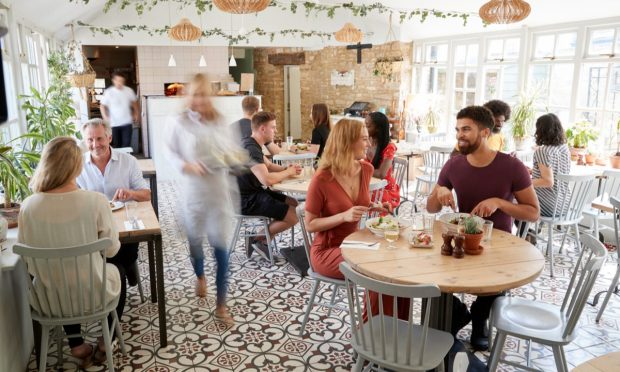PYMNTS Data: Two-Thirds of Consumers Not Sympathetic to Restaurants’ Labor Challenges

As restaurants continue to struggle with labor challenges, not all consumers are sympathetic to the difficulties they are facing — the majority are not even cognizant of them.
To that point, research from the May/June edition of PYMNTS’ Digital Divide series, “The Digital Divide: Technology, the Metaverse and the Future of Dining Out, created in collaboration with and Paytronix, revealed that only 36% of consumers at least partially agree that the restaurants they visit have become understaffed. Additionally, only 27% of consumers strongly agree.
Read more: Restaurants Tinker With Tech Recipe to Balance Efficiency and Personal Service
These findings, which came from an April survey of nearly 2,500 U.S. adults who regularly purchase food from restaurants, showed that nearly two-thirds (64%) of consumers are either unaware of the issue or do not agree that it is a problem. In contrast, research from PYMNTS’ March study, “Main Street Economic Health Survey: Navigating Economic Uncertainty,” created in collaboration with Melio, found that 41% of small- to medium-sized businesses (SMBs), including restaurants, cited difficulties hiring employees as a relevant obstacle to success in 2022, and 14% listed this concern as their single greatest challenge.
Get the study: Main Street Economic Health Survey
These challenges are hampering restaurants’ ability to meet consumer demand.
“[Restaurants are] still struggling,” Paytronix CEO Andrew Robbins told PYMNTS’ Karen Webster in a March interview. “So, revenue’s up, dining is up, and it really could be a boom market for them if they could get the labor. There are still people who are shutting down, not doing the full day that they would normally do and closing some nights. … It’s still a real problem.”
See more: Labor Challenges Stifling Would-Be Restaurant Boom, Paytronix CEO Says
Consumers’ lack of awareness or concern for these challenges could present issues for restaurants when it comes to maintaining relationships with their customers. After all, there is a meaningful difference between how a diner who is sympathetic to these issues would view slower-than-would-be-ideal service versus how someone who is not would react.
Granted, the restaurant workforce is slowly recovering. Preliminary U.S. Bureau of Labor Statistics (BLS) data on the Food Services and Drinking Places (i.e., restaurants and bars) subsector found that, in May, employment in the industry was up by about 46,100 jobs, although the total count remained around 425,800 below May 2019.
Not only do restaurants have fewer employees than before the pandemic, but they are being called upon to meet not only their dine-in needs but also a greater share of their food-at-home meal occasions. Findings from PYMNTS’ 2021 How We Eat Playbook, created in collaboration with Carat from Fiserv, revealed that diners now are 31% more likely to buy meals for delivery or pickup than they are to dine on-site.
Read more: Restaurants and Grocers See Path to Picking up 200M New Customers
